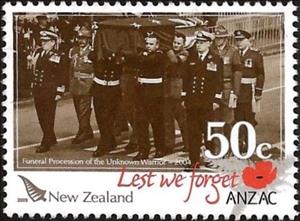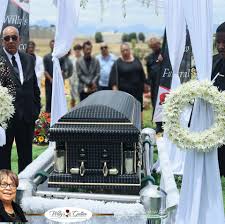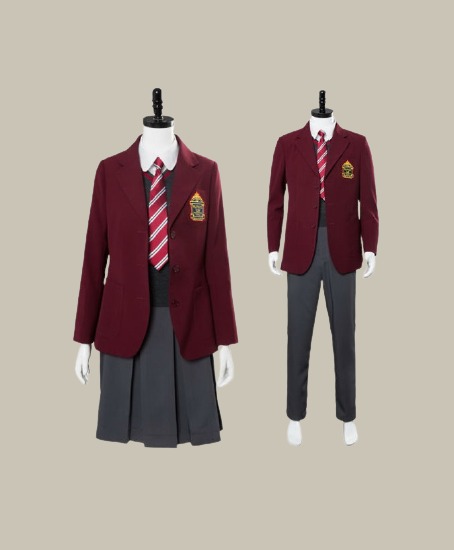Stamp: Funeral Procession of the Unknown Warrior 2004 (New Zealand 2009)
Funeral Procession of the Unknown Warrior 2004 (New Zealand 2009)
01 April (New Zealand ) within release ANZAC (2nd series). Comrades in Arms goes into circulation Stamp Funeral Procession of the Unknown Warrior 2004 face value 50 New Zealand cent
| Stamp Funeral Procession of the Unknown Warrior 2004 in catalogues | |
|---|---|
| Michel: | Mi: NZ 2581C |
| Unificato: | Un: NZ 2639B |
Stamp is horizontal format.
From Prestige BookletAlso in the issue ANZAC (2nd series). Comrades in Arms:
- Booklet - Anzac face value 19.90;
- Stamp - ANZAC Battalion - Vietnam face value 2.50;
- Stamp - Funeral Procession of the Unknown Warrior 2004 face value 50;
- Stamp - HMS Achilles - WW2 face value 1.50;
- Stamp - Kayforce - Korea face value 2;
- Stamp - Maori Pioneer Battallion face value 50;
- Stamp - No 75 (NZ) Squadron RAF - WW2 face value 1;
Stamp Funeral Procession of the Unknown Warrior 2004 it reflects the thematic directions:
A funeral director, also known as an undertaker or mortician (American English), is a professional who has licences in funeral arranging and embalming (or preparation of the deceased) involved in the business of funeral rites. These tasks often entail the embalming and burial or cremation of the dead, as well as the arrangements for the funeral ceremony (although not the directing and conducting of the funeral itself unless clergy are not present). Funeral directors may at times be asked to perform tasks such as dressing (in garments usually suitable for daily wear), casketing (placing the corpse in the coffin), and cossetting (applying any sort of cosmetic or substance to the best viewable areas of the corpse for the purpose of enhancing its appearance) with the proper licences. A funeral director may work at a funeral home or be an independent employee.
A military, also known collectively as an armed forces, are a heavily armed, highly organized force primarily intended for warfare. Militaries are typically authorized and maintained by a sovereign state, with their members identifiable by a distinct military uniform. They may consist of one or more military branches such as an army, navy, air force, space force, marines, or coast guard. The main task of a military is usually defined as defence of their state and its interests against external armed threats.
A uniform is a variety of costume worn by members of an organization while usually participating in that organization's activity. Modern uniforms are most often worn by armed forces and paramilitary organizations such as police, emergency services, security guards, in some workplaces and schools, and by inmates in prisons. In some countries, some other officials also wear uniforms in their duties; such is the case of the Commissioned Corps of the United States Public Health Service or the French prefects. For some organizations, such as police, it may be illegal for non-members to wear the uniform.



